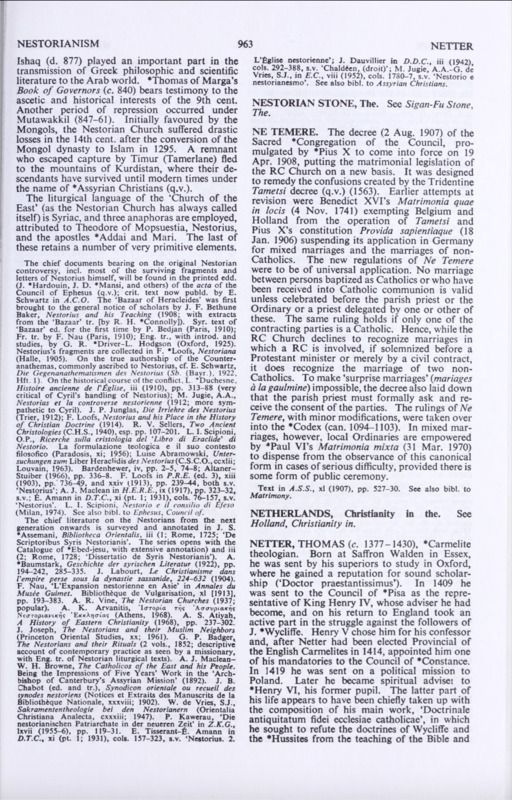-
Title
-
The Oxford dictionary of the Christian Church
-
Date
-
1974
-
Description
-
The Oxford outlines the historical arc of the Church of the East. It notes a phase of repression under the Abbasid caliph al-Mutawakkil (847–861). Earlier witnesses such as Thomas of Marga’s ninth-century Book of Governors and references to Ishaq (d. 877) attest to the church’s intellectual life, while later the Mongols initially favored it. A major collapse followed in the fourteenth century after the Mongol dynasty’s conversion to Islam in 1295. Survivors who escaped Timur’s campaigns fled into the mountains of Kurdistan; their descendants, says the entry, have lived into modern times under the name “Assyrian Christians.” The article adds that the Church of the East’s liturgical language is Syriac and that its eucharistic anaphoras include those attributed to Theodore of Mopsuestia, Nestorius, and to Addai and Mari, the last retaining notably early features.
The entry is also a guide to sources and terminology. It remarks that the Church of the East has always called itself by that name, and it provides an extensive bibliography on the Nestorian controversy and church history (editions of Nestorius’s writings and classic modern studies by, among others, Loofs, Bethune-Baker, Labourt, and Assemani). It directs readers to a cross-reference on “Assyrian Christians” and to related bibliographies, indicating how modern scholarship labels the surviving Kurdish-mountain communities that stem from the historic Church of the East.
-
Language
-
English
-
Publisher
-
The Oxford Dictionary of the Christian Church (2nd ed., revised), edited by F. L. Cross and E. A. Livingstone, Oxford: Oxford University Press, 1974 — entry “Nestorianism,” p. 963.
-
archive.org
-
Subject
-
Christianity


